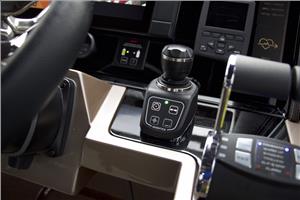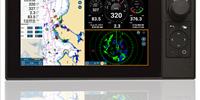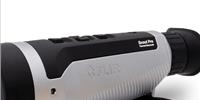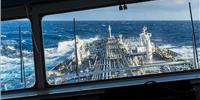With its intuitive control and dynamic positioning capabilities, the Marex 3D Joystick system offers boaters a truly stress-free experience on the water.
Harbor docking and undocking can be a challenge—even for experienced skippers. In narrow or confined spaces, the boater must operate the steering and main and auxiliary drives simultaneously, all while contending with the wind and waves. Now, a new joystick system simplifies this process, enabling boaters to perform these various operations with only one hand. This control system, called the Marex 3D Joystick, takes the stress out of maneuvering yachts and speedboats in tight spaces. It also offers a host of intelligent control and dynamic positioning features that put the “pleasure” back in pleasure vessel.
The challenges of conventional controls
In a traditional control system, the skipper steers the yacht or speedboat by turning the wheel, which moves the rudder in the water. This method relies on water continuously running across the rudder, making navigation at slower speeds or in harbors much more difficult. To overcome this issue, many boats used for recreation utilize thrusters in addition to the main propulsion system. However, handling the steering wheel, engaging both the engine and thrusters and contending with the wind and current is a lot for one person to handle—especially in tight or narrow spaces.
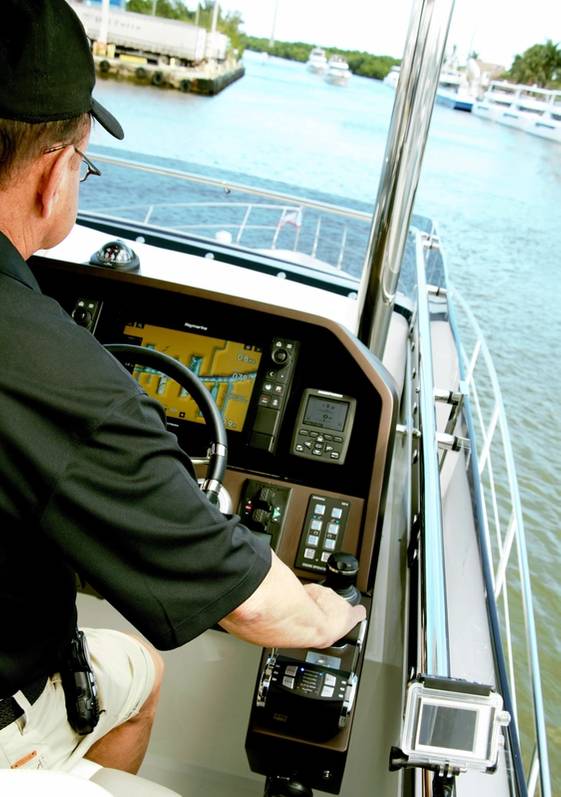 (Photo: Emerson)
(Photo: Emerson)
Smooth maneuvering at your fingertips
The AVENTICS Marex 3D Joystick system overcomes these issues by bringing all the controls together in one place, enabling boaters of any skill level to control their vessel using an ergonomically designed joystick. As the boater pushes or twists the joystick, the boat mirrors the movement exactly by managing the engines and thrusters. At the same time, the system automatically compensates for unwanted movements due to crosswind or current using a sophisticated vector control unit and integrated electronic compass.
The Marex 3D Joystick system is based on the Marex OS III remote control system for reversing gear systems. When combined with an existing Marex OS III system, boaters can operate Marex 3D as a standalone joystick, or they can pair the joystick with the main engine controls. In thruster mode, the joystick operates the thrusters, while the engine remains under the control of the Marex OS III control head. In 3D mode, the joystick controls all driving units—thrusters, engines and steering gear.
“When you move the joystick, the system intelligently decides whether it needs to engage the bow thruster, the stern thruster or both,” explains Steve Vincent, the Manager of Marine Business Development at Emerson. “Or the system may decide it also needs to engage the gearbox. The intelligence is built in, and so the system will automatically coordinate all the driving units based on the desired result.”
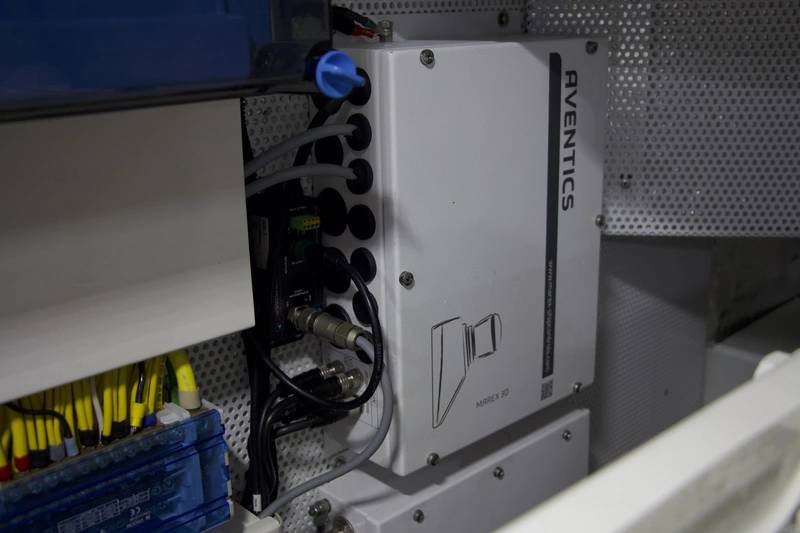 (Photo: Emerson)
(Photo: Emerson)
The added benefits of dynamic positioning
On top of its standard control features, including the ergonomic joystick, vector control unit and integrated compass, the Marex 3D Joystick system offers several dynamic positioning capabilities. First, with the heading hold feature, the system maintains the boat’s heading while allowing the vessel to drift, enabling boaters to enjoy the view of a coastline or sunset, for example. It will even maintain the desired heading in the midst of waves and wind. Second, a virtual anchor will hold the boat within a defined circle as if the boat is attached to an invisible anchor chain. At the same time, the Marex system actuates the engines in an intelligent way to minimize fuel consumption and noise.
And third, whether a boater is waiting at a drawbridge or navigating a narrow port entrance, the system’s 3D hold mode maintains both the heading and position of the boat with perfect accuracy. “In this mode, the deviation can be very small depending on the available thrust and duty cycle of the thrusters,” Vincent explains. “In one application, I activated the system while I was in 20-knot winds, and we never deviated more than a few feet.”
Together, these dynamic positioning capabilities offer skippers of yachts, speedboats and other pleasure vessels a number of benefits, including:
- Outstanding precision: a smart control coordinates the drives, holding the boat’s heading and compensating for the yaw caused by wind or current.
- Intuitive control: the yacht or speedboat follows the movement of the joystick exactly.
- Simplified maneuvering: the system eliminates the need to handle the wheel and control levers at the same time, facilitating navigation in ports and harbors.
- Cost and space savings: with Marex 3D, additional control elements for transverse thrusters are no longer necessary.
- Control flexibility: Marex 3D is a flexible solution for vessels of all sizes, with the option to integrate up to six joystick stations and retrofit existing Marex systems.
“Having recently owned a yacht with pod propulsion equipped with dynamic positioning, I was surprised to find this technology is also available for shaft-driven yacht,” says Jack Sternlieb, MD, owner and operator of the Jack of Hearts. “I added the Marex 3D Joystick to my new yacht and have been extremely pleased with the dynamic positioning capabilities. These features work well whenever I’m waiting at drawbridges or fuel docks, or when the USCS boards for a routine inspection. I highly recommend this technology especially for owner operators, as it will help make boating a stress-free process.”
An open system for easy upgrading
The Marex 3D Joystick system is a supplement to Emerson’s AVENTICS Marex OS control system, which was famously installed on the boats featured in National Geographic’s Wicked Tuna television series. Emerson recently modified its Marex 3D Joystick for easier integration into vessels with a Marex OS system. In these cases, the joystick can be retrofitted with minimal wiring effort, reducing both installation and startup times.
In terms of compatibility, the Marex 3D Joystick system works with most engines and thruster brands in conventional shaft line, fixed pitch propeller applications. It also offers a NMEA 2000 interface, as well as analog or digital signals for all thruster interfaces.
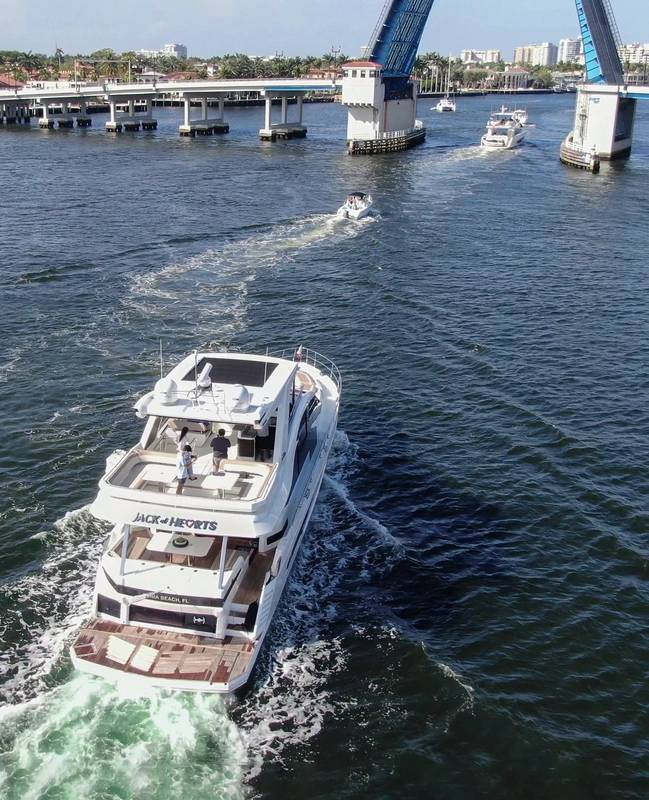 (Photo: Emerson)
(Photo: Emerson)
